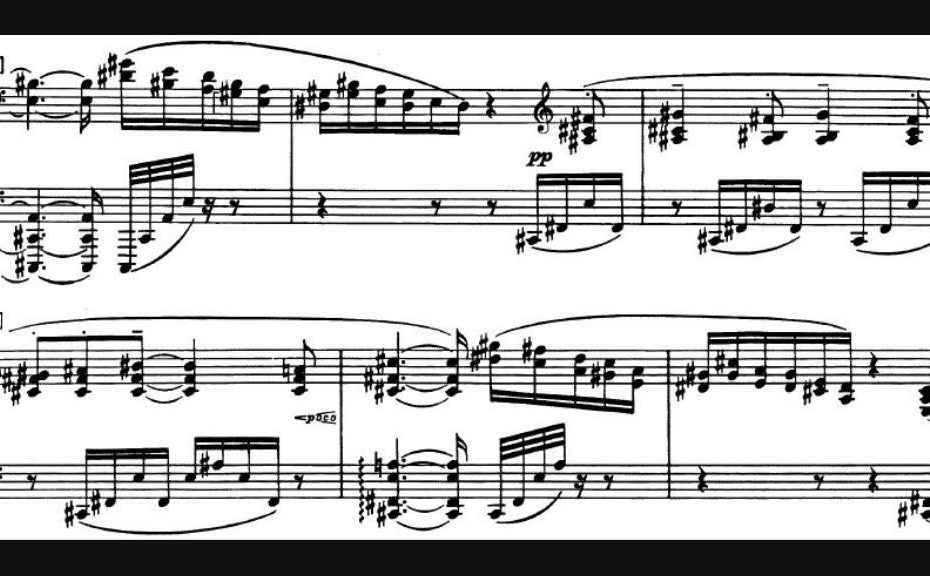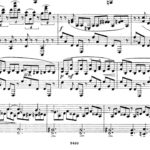– Composer: Alexander Nikolayevich Scriabin (6 January 1872 — 27 April 1915)
– Performer: Vladimir Ashkenazy
– Year of recording: 1983
Piano Sonata No. 8, Op. 66, written between 1912-1913.
The sonata consists of a single movement: Lento – Allegro agitato.
Scriabin colourfully described parts of the eighth sonata as “the most tragic episode of my creative work.” Scriabin shares a place with Mahler and early Berg in the epoch during which the late Romantic musical language was pushed to a feverish intensity. The sound world here is much like the early Expressionism of Berg’s Opus 1 piano sonata. The Sonata No. 8 sticks out among Scriabin’s late sonatas partly for what it lacks: there are no violent climaxes, and the dissonances are comparatively less harsh. What it shares with the others is a lack of a central key and a richly coloured but essentially static harmonic language, charged to the breaking point with Scriabin’s mystical longings. The work was written in 1912; Stravinsky called it “incomparable,” but Scriabin did not return the favor, remarking that Stravinsky had only a “minimum of creativity.” Like the composer’s other late sonatas, it is in a single movement.
The emphasis on vertical harmonies is part of the music’s perceptible push towards a kind of mystical simultaneity — the composer seems to lose patience with melody because it requires time to unfold. Scriabin understood that with the right chord you can force a lot of obsessions and feelings into a single intense moment, and seemed to be working toward a mystical point in his thinking where music would lose its temporal aspect.
Hence one sometimes gets the sense here that the parts of the music are in conflict with each other. A motion which starts in the left hand often rises up against the right hand’s melody, and the latter inevitably is shattered and overwhelmed. Often when the music gets extremely busy, the whole blurs into a dense, churning, layered texture of motifs, chords, and ornaments all vying for the same space. The music is likewise full of the abundant, long trills that Scriabin favored; they swarm the music. They are simultaneous points of motion and stasis, like the panicked flutterings of trapped moths. After building up his heavy murky textures, Scriabin often strips the music down again abruptly, sometimes to a single, fading trill. In the last third of the work, he brightens up ironically for short, macabre, dance-like passages that are quickly washed away in the restless flux.
This is one of Scriabin’s least played sonatas, probably because it is the least ‘showy’ of his sonatas, relatively harder to understand, and at the same time also one of the most difficult sonatas…




